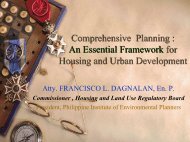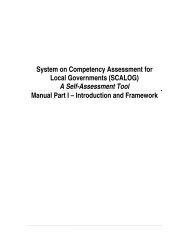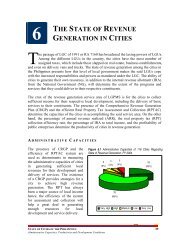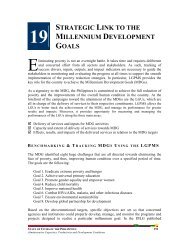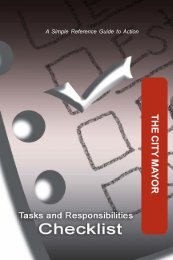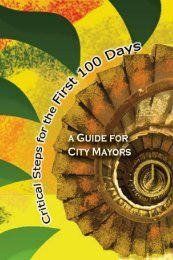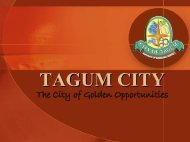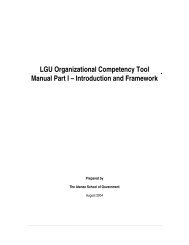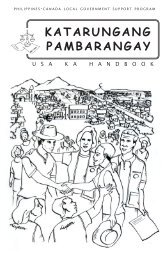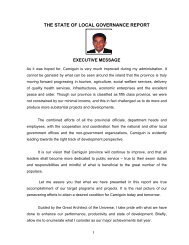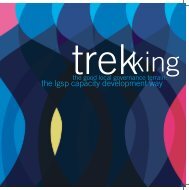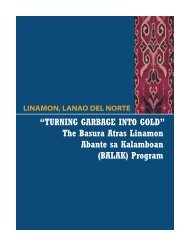PED guidebook main sxn rev6. FINAL.pdf - LGRC DILG 10
PED guidebook main sxn rev6. FINAL.pdf - LGRC DILG 10
PED guidebook main sxn rev6. FINAL.pdf - LGRC DILG 10
Create successful ePaper yourself
Turn your PDF publications into a flip-book with our unique Google optimized e-Paper software.
Strengthening Provincial/Local Project EvaluationPlanning and Expenditure Managementand DevelopmentExample (m): Consider the following very simple schedule of projected cash flows of our irrigation project. It has a servicearea of <strong>10</strong>0 hectares. It costs a total of P <strong>10</strong> million to build, requires regular <strong>main</strong>tenance costing P 1500 per hectare peryear and periodic <strong>main</strong>tenance costing P 5000 per hectare every 5 years. The irrigation service fee is <strong>10</strong>0 kg of palay perhectare during the wet season and 150 kg/ha during the dry season. Let us first assume no escalation of relative prices, thatis, the cost of operating and <strong>main</strong>taining the facility will just move with the price of palay, equal to Php 11.00 per kg. We alsoassume a residual value of 1% of investment cost. Below is the projected cash flow.The first thing we note is that the irrigation project is really a losing proposition if benefits are reckoned only at the possible ISFcollection. The NPV is negative. This also means that it is not an attractive undertaking for the private sector. Consider the nexttwo tables where we look at cash flow and where we should be prepared to offer subsidies:RGEdillon January 200636



